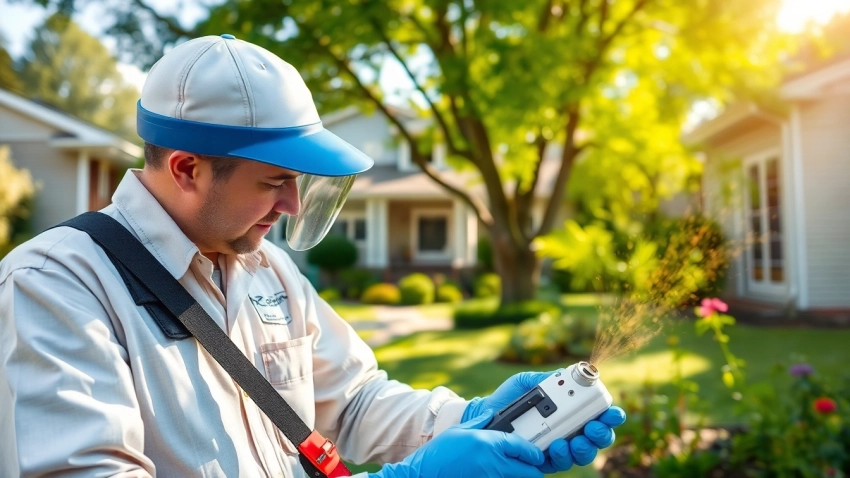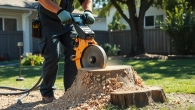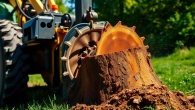
Comprehensive Guide to Effective Termite Treatments for Homeowners
Understanding Termites and Their Impact on Homes
Termites are small but destructive insects capable of causing extensive damage to homes and properties. These pests thrive in warm and humid environments, with Australia’s diverse climate providing an ideal breeding ground for several species. The presence of termites in a structure can go unnoticed for long periods, leading to severe structural damage before homeowners realize they have a problem. Therefore, effective termite treatments are essential in controlling and eradicating these pests. In this comprehensive guide, we delve into the nature of termites, their signs, and the importance of timely treatments.
Types of Termites
There are three primary types of termites that are known to cause damage to homes: subterranean, drywood, and dampwood termites.
- Subterranean Termites: These are the most common species found in Australia. They live in colonies underground and are notorious for building mud tubes that provide them with moisture while allowing them to travel to food sources.
- Drywood Termites: Unlike subterranean termites, drywood termites do not require contact with soil and infested dry wood, exposing structural timber, furniture, and other wooden items directly to damage.
- Dampwood Termites: These prefer damp and decaying wood, typically found in areas with moisture issues. They are less common in urban settings but can still pose a threat if conditions are favorable.
Signs of Termite Infestation
Recognizing the signs of termite infestation is key to mitigating damage. Some common indicators include:
- Presence of mud tubes on exterior walls, foundations, or inside crawl spaces.
- Sawdust-like frass near wooden structures, which indicates termite activity.
- Hollow-sounding wood when tapped, indicating that a termite colony may have consumed the interior.
- Swarmers, or winged termites, often seen during mating seasons, which indicates an established colony nearby.
Why Termite Treatments Are Essential
Termite treatments should be viewed as a necessary investment to protect one’s home. Ignoring potential infestations can lead to significant repairs and costs that may exceed what preventive treatments would have incurred. Additionally, termite damage is often not covered by homeowners’ insurance, making proactive treatments even more crucial. By engaging in timely and effective termite treatments, homeowners safeguard their investment and ensure the structural integrity of their property.
Popular Termite Treatments Explained
When it comes to treating termite infestations, various methods are available, each designed to address the specific type of termite and the severity of the infestation. Below are some of the most widely used termite treatment options:
Liquid Termiticides
Liquid termiticides are one of the most common methods for treating termite infestations. These chemicals are applied to the soil around and beneath a structure, creating a barrier that termites cannot cross. When termites come in contact with the treated soil, they either die or are repelled. The most effective liquid termiticides include:
- Fipronil: A popular choice that disrupts the nervous system of termites.
- Imidacloprid: Blocks nerve impulses, leading to a quick demise of the pests.
It’s essential for homeowners to hire professionals who understand how to apply these chemicals safely and effectively, ensuring compliance with local regulations.
Termite Baiting Systems
Termite baiting systems are an alternative to liquid termiticides. These systems involve strategically placing bait stations around a property, containing slow-acting insecticides that foraging termites consume and carry back to their colonies. Over time, this method effectively eliminates the entire colony. Key aspects of baiting systems include:
- Less Chemical Use: Baiting systems reduce chemical exposure compared to liquid treatments.
- Ongoing Monitoring: The stations provide continuous monitoring for termite activity, allowing for timely interventions.
While slightly slower than liquid treatments, baiting systems are highly effective due to their ability to target and eliminate entire colonies.
Fumigation: When It’s Necessary
Fumigation is a comprehensive technique often employed when an infestation has become severe. This method involves enclosing the affected structure in a tent and releasing a gas that penetrates all wood surfaces, killing termites on contact. Fumigation is generally necessary when:
- A property has extensive damage that cannot be effectively treated through local methods.
- Presence of drywood termites, which are difficult to treat without full-structure fumigation.
Although fumigation is effective, it requires careful planning and execution, as the structure must be vacated during the process and often must remain vacant for several days post-treatment.
DIY vs. Professional Termite Treatments
While some homeowners consider DIY termite treatments, it is crucial to weigh the benefits of professional services against home remedies.
Benefits of Professional Solutions
Engaging a professional pest control service for termite treatments has several advantages:
- Expertise: Professionals are trained to identify the type of termites and the extent of the infestation.
- Advanced Equipment: They use specialized equipment and products that are often more effective than DIY alternatives.
- Long-term Solutions: Professionals can monitor and manage termite activity over time, preventing future infestations.
Effective DIY Techniques
For those inclined to tackle pest control independently, several DIY methods can be effective when dealing with termite prevention or minor infestations. These methods include:
- Applying Borate Solutions: Borate is a non-toxic solution that can be applied to wood and is effective in preventing termite infestations.
- Using Orange Oil: Containing a chemical called d-limonene, orange oil can kill termites on contact.
While these methods can be helpful for minor issues, it’s critical to recognize the limits of DIY solutions, especially in the face of a major infestation.
Cost Comparison and Long-term Efficacy
Cost can be a significant factor in deciding between DIY and professional treatments. Generally, DIY options are less expensive but may result in higher long-term costs due to inadequate treatment. Professional solutions often come with upfront costs but provide thorough treatment and monitoring, ensuring a more durable result. The following table outlines the general costs associated with each option:
| Type of Treatment | Estimated Cost | Effectiveness |
|---|---|---|
| DIY Treatments (Borates, Orange Oil) | $50 – $150 | Variable |
| Professional Liquid Treatments | $300 – $2,500 | High |
| Professional Fumigation | $1,500 – $4,000 | Very High |
Preventative Measures for Termite Management
Preventing termite infestations is an essential part of home maintenance. With a proactive approach, homeowners can save significant amounts on treatment costs and repairs. Here are effective strategies:
Home Maintenance Tips
To mitigate the risk of termite infestations, implement these maintenance tips:
- Keep wooden structures dry and well-ventilated.
- Seal cracks in walls and foundations to deny entry.
- Regularly inspect wooden structures for signs of damage.
Creating a Termite-Resistant Environment
By making certain modifications to your property, you can create an environment less conducive to termites:
- Direct water from gutters and downspouts away from the building.
- Maintain at least 18 inches of clearance between soil and wood structures.
- Store firewood and other wooden materials away from the foundation.
Regular Inspections and Their Importance
Schedule annual inspections by pest control professionals to catch any termite activity early. Regular assessments help in:
- Identifying potential problem areas before infestations grow.
- Ensuring peace of mind regarding the integrity of your home.
- Staying informed about any new developments in pest control.
Evaluating Termite Treatment Success
A successful termite treatment is not only about eradication but also about monitoring and evaluating the effectiveness of the measures taken.
Signs of Successful Treatment
After treatment, look for signs that indicate a successful outcome:
- Absence of mud tubes and droppings in treated areas.
- Structural integrity with no hollow sound in wood.
- No signs of new swarming activity during mating seasons.
When to Call for Further Help
If signs of termites reappear after treatment or if you notice new damage, it’s crucial to contact a professional immediately. Do not wait as termite colonies can swiftly regain strength.
Long-Term Monitoring Strategies
Consider installing monitoring systems around your home that can alert you to any termite activity. Regular follow-up treatments can also be scheduled to ensure the continued protection of your home from these voracious pests.












Leave a Reply